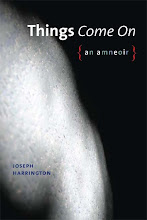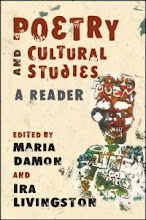Mark's book, Coal Mountain Elementary, contains numerous accounts of deadly coal mining accidents (preventable) in China. It also contains an extended account of the Sago Mine disaster
At one point, I commented on one of Mark's posts: "This is an extension of your book. It never ends." By which I meant that the book never ends because the subterranean carnage never ends.
Then he commented that the real extension (in time) of the book is his blog, Coal Mountain.
It was only later that this made me think about Jen H's blog, Up From the Ground - which is her MFA thesis, and in which she is theorizing the blog-as-MFA-thesis. She (and I) has been trying to work through how blog-art differs from blog-everything-else.
Obviously, any blog that announces itself as an MFA thesis, and then proceeds to theorize itself as such, has got to be art. So there's that.
But it occurs to me now that another aspect to explore is time. The web log, like other logs, is written with time in mind - and marks time's passage. So do journals and letters. In that sense, these are all reflexive forms that invite reflection on their reflexivity. And the temporality is not just backwards (in the format), it's forward (new posts).
Moreover, there is the question of the frame. Part of a frame is temporal. Once you publish your book, or sell your painting, it's out there. But what happens when you keep writing and publishing the book - daily? Then it becomes like that John Cage piece that's going to take 8,000 years or whatever. The very fact of the work's duration creates its own context by gesturing beyond itself.
So if Jen continues the blog after the MFA defense (successful), and after the thesis is enshrined in the Library (in whatever form that may be), then it has automatically transgressed the art-frame, the parergon (which has already prompted some temporal anxiety from the Library). And by self-consciously doing so, the blog as thesis-extender will behave like those works of conceptual art or pop art that work by playing off of or against the Institutions of Art, or by making an object anomalous by moving it to a new location that is not coded as "art-space." Perhaps any Blog Art (or "bloggart," in Jen's definition) that utilizes the form - as distinct from using the blog as a delivery system for art - is itself de facto conceptual art (at least at this point in time).
But by the same token, a blog's ability to exceed the covers, in addition to being an artistic act, gestures beyond the Institution - towards the Public. In a sense, a book is private - one has to physically have it; it is enclosed between covers. It costs money and a lot of time to make it. The blog opens out to a much wider audience, and invites that audience in. Immediately. Indeed, it might double-back against the Institutions of Art, or open towards activism against non-art institutions - which is what Mark Nowak's blog does, I think.
So maybe the trick is not to turn blogs into art, but rather to blur the line between the two. And I have to think that time, as well as space, is part of that process.










